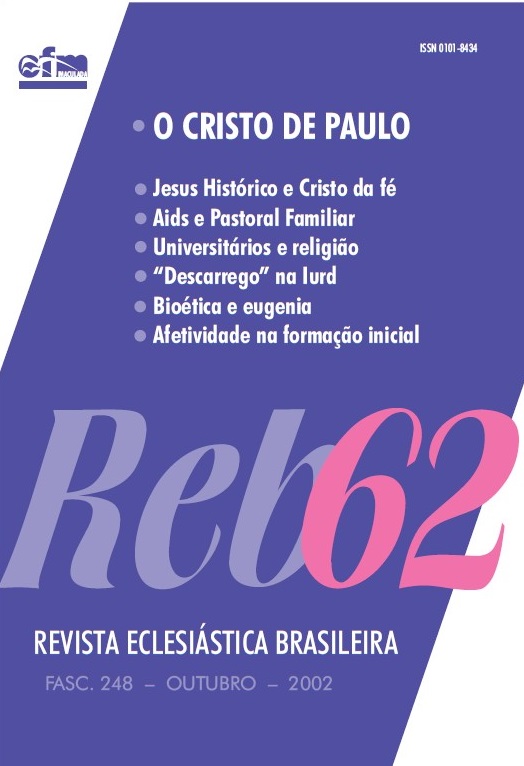O mistério do Verbo encarnado funda uma peculiar relação entre história e fé
DOI:
https://doi.org/10.29386/reb.v62i248.1933Palavras-chave:
Jesus, Encarnação, História, Fé.Resumo
O querigma apostólico revela uma intrínseca relação entre história e fé: são pólos distintos, mas reciprocamente implicados. A cristologia sempre esteve às voltas com a tarefa de distinguir um pólo do outro, sem, contudo, separá-los. Chegou à conclusão de que o “Jesus histórico” e o “Cristo da fé” são dimensões constitutivas do Mistério de Jesus Cristo e que, portanto, devem ser reciprocamente articuladas. O Autor, por sua vez, conclui afirmando ser o Mistério do Verbo encarnado, em última instância, o fundamento da peculiar relação entre história e fé, ao mesmo tempo em que sublinha a importância de se explicitar a especificidade de cada um dos pólos, de modo a não sacrificar a intrínseca solidariedade entre ambos.
Abstract: The apostolic message reveals an intrinsic relationship between history and faith: they are different extremes, but one implies the existence of the other. Christology has always been involved in the task of distinguishing one of these extremes from the other, but without separating them. It came to the conclusion that since the “historical Jesus” and the “Christ of the faith” are both constitutive dimensions of the Mystery of Jesus Christ, they must be reciprocally articulated. In his conclusion, the Author states that, in the last instance, the Mystery of the Incarnated Word is the basis of the peculiar relationship between history and faith. He also emphasizes how important it is to make explicit the specificity of each of these extremes so as not to sacrifice the intrinsic solidarity between them.Downloads
Downloads
Publicado
Como Citar
Edição
Secção
Licença
Direitos de Autor (c) 2020 Revista Eclesiástica Brasileira

Este trabalho encontra-se publicado com a Licença Internacional Creative Commons Atribuição 4.0.
Os autores cedem os direitos autorais; como gratificação, a REB oferece dois exemplares ao Autor de um artigo.
A REB adere à licença não comercial (Creative Commons). Portanto, é permitida cópia, distribuição e exibição dos textos, respeitados os direitos autorais e citada a fonte de sua proveniência.


